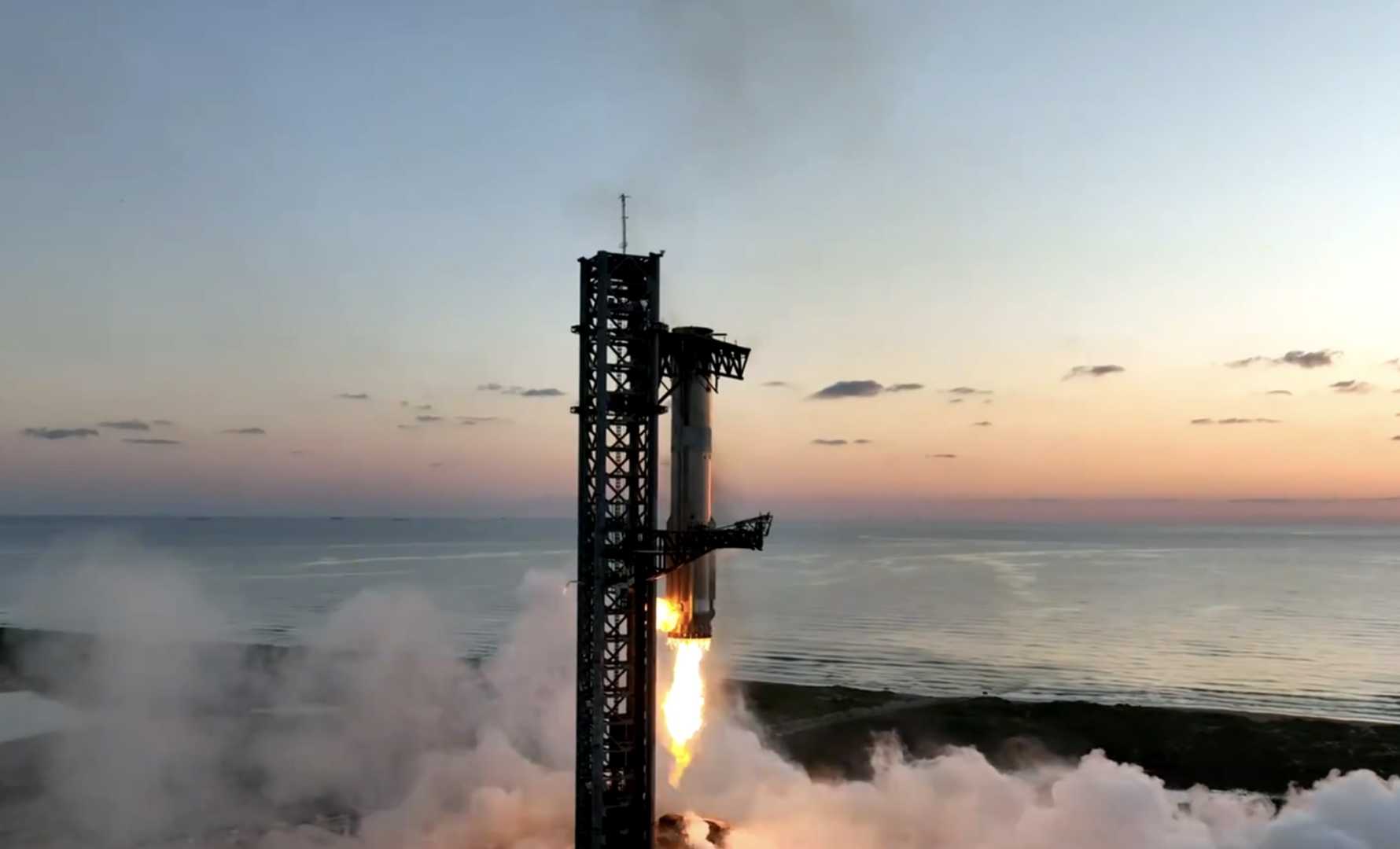Tech
SpaceX Prepares for Seventh Starship Test Flight with Ambitious Goals

BROWNSVILLE, Texas — SpaceX is gearing up for the seventh test flight of its Starship megarocket, the most powerful rocket system ever built, with liftoff scheduled for Thursday, January 16, 2025. The mission aims to push the boundaries of spaceflight technology, testing upgrades to the vehicle’s propulsion system, reusability, and satellite deployment capabilities.
The nearly 400-foot-tall Starship, consisting of the Super Heavy booster and the Starship spacecraft, is set to launch from SpaceX’s Starbase facility near Brownsville, Texas, at 5 p.m. ET. The launch window will remain open for one hour, with the event livestreamed on SpaceX’s website and X, the social media platform formerly known as Twitter.
This flight marks a significant milestone as SpaceX reuses a Raptor engine from a previous mission for the first time, a critical step in the company’s goal of reducing costs and turnaround time between launches. The Super Heavy booster, powered by 33 Raptor engines, will propel the uncrewed Starship spacecraft toward space before attempting a controlled landing using SpaceX’s innovative “chopstick” catch maneuver.
SpaceX has made several upgrades to the Starship system for this mission, including a 25% increase in propellant capacity and modifications to the vehicle’s flaps to improve reentry performance. The spacecraft will also deploy 10 satellite simulators, mimicking the size and weight of SpaceX’s next-generation Starlink satellites, though they will not remain in orbit.
“This new year will be transformational for Starship, with the goal of bringing reuse of the entire system online and flying increasingly ambitious missions,” SpaceX stated in a recent update. The company envisions Starship as a key player in future lunar and Mars missions, as well as in deploying large constellations of satellites.
Despite recent successes, including the first successful catch of a Super Heavy booster in October 2024, SpaceX faces significant challenges. The company has yet to achieve orbital flight or test in-space refueling, both of which are essential for long-duration missions to the moon and Mars. CEO Elon Musk has emphasized the need for “hundreds of missions” before attempting a crewed flight.
SpaceX’s Starbase facility is also undergoing expansion, with the construction of a 1 million-square-foot “Starfactory” aimed at producing hundreds of Starship vehicles annually. “The boosters will come back and turn around to launch the next ship,” said SpaceX engineer Jessie Anderson during a recent broadcast. “That production cadence might sound crazy, and that’s because it is.”
Thursday’s launch will be closely watched as SpaceX continues to refine its Starship system, bringing humanity closer to the dream of interplanetary travel.












